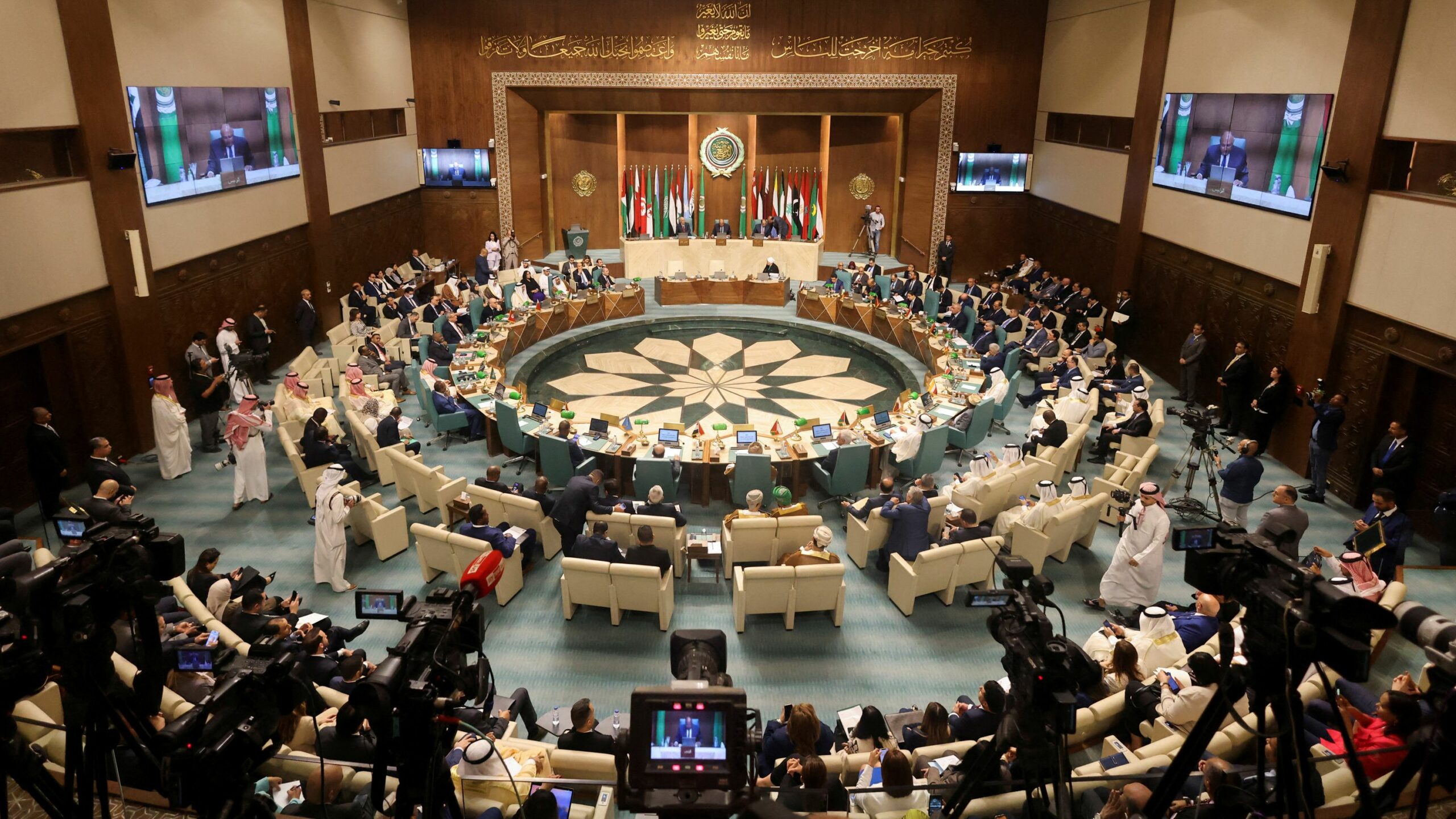A ‘Middle Kingdom’ Dawns On India’s West
Context:
All 22 Arab countries met once more after a 12-year break, and 17 of them had representatives at the head of state or government level. The conference heard from the president of Ukraine, a special invitee, and readmitted Syria.
Arab League Summit
- The Arab League Summit is a gathering of Arab nations that serves as a forum for discussion of a range of political, economic, social, and cultural issues impacting the Arab world.
- Purpose: The Arab League Summit strives to advance Arab solidarity, cooperation, and coordination to tackle shared problems, advance regional integration, and improve political and economic ties.
- Participants: The heads of state or government of Arab League members are present at the summit. The Arab League had 22 members as of September 2021, among them Egypt, Saudi Arabia, Iraq, Jordan, Lebanon, Morocco, Qatar, and the United Arab Emirates.
- Agenda: The Arab League Summit’s agenda changes every year, based on the pressing problems and difficulties the Arab world is now facing. Topics like regional political developments, conflicts and crises, economic cooperation, social issues, and cultural collaboration are frequently discussed at the summit.
- Regional Conflicts: The Arab League Summit gives member states a forum to discuss and coordinate their stances on regional conflicts like the Israeli-Palestinian conflict, the state of affairs in Syria, Iraq, Libya, and Yemen, as well as other geopolitical concerns impacting the area.
- Resolutions and Declarations: Member states have the option to make resolutions and declarations at the summit that cover a range of topics. These resolutions are meant to direct the Arab League’s collective action and decision-making.
- Bilateral Meetings: On the sidelines of the summit, head of state representatives from participating nations can hold bilateral meetings. Leaders might discuss specific bilateral concerns, improve ties, and look into potential areas of cooperation during these gatherings.
- Joint Initiatives: Joint initiatives or agreements aimed at strengthening regional integration and collaboration are frequently launched at the Arab League Summit. These programmes may focus on things like infrastructure construction, trade facilitation, and cross-cultural interactions.
- Non-Member Participation: Occasionally, non-member nations or international organisations are invited to attend the Arab League Summit as observers or guests. This enables communication and collaboration with outside parties who are interested in or involved in regional matters.
India-Saudi Arabia RelationShip
- Economic Cooperation: Saudi Arabia is a significant commercial partner for India in terms of economic cooperation. Saudi Arabia is one of India’s top crude oil suppliers, and throughout the years, bilateral commerce between the two nations has increased dramatically. Another major importer of oil from Saudi Arabia is India. Both nations are eager to expand their economic collaboration beyond the oil industry into fields including technology, infrastructure development, renewable energy, and defence.
- Energy Security: For many years, Saudi Arabia has been an important source of crude oil for India. Saudi Arabia has long been one of the major producers of oil, which India significantly depends on to meet its energy needs. Both nations have held conversations to improve their energy cooperation, including joint ventures, energy sector investments, and the investigation of alternative energy sources.
- Strategic Partnership: India and Saudi Arabia now have a strategic partnership, which is an improvement over their previous bilateral relationship. This alliance includes cooperation in maritime security, counterterrorism, intelligence sharing, and defence and security. Regular high-level exchanges and visits between the two nations improve their strategic connections and advance their collaboration in these areas.
- People-to-People Contacts: Saudi Arabia is home to a sizable Indian expatriate population, which supports the country’s economy and promotes intercultural exchange. Over 2.6 million Indians are thought to live in Saudi Arabia, where they contribute significantly to the social, educational, and cultural ties between the two countries.
- Multi-Lateral Cooperation in global fora like the United Nations, the Organisation of Islamic Cooperation (OIC), and the G20, India and Saudi Arabia work closely together. Many global concerns, including terrorism, climate change, and economic cooperation, have similar stances.
- Religious ties and the hajj: Saudi Arabia is highly significant to Muslims all over the world, including India. Many Muslims from India visit Saudi Arabia each year to make the Hajj pilgrimage. For Indian Muslims, the procedure of making the pilgrimage has been made easier. The Saudi government also works closely with the Indian government to make sure that everything runs smoothly for the pilgrims.
Points to Ponder :
- After a 12-year break, all 22 Arab states were present at the 32nd Arab League Summit in Jeddah, with 17 of them represented at the head of state or government level.
- The Ukrainian President was invited as a special guest and Syria was readmitted to the Arab League, showing that there was more involvement and engagement.
- With a pro-Palestinian agenda and a focus on socioeconomic difficulties affecting the Arab world, the “Jeddah Declaration” released after the summit made no specific mention of Israel or Iran-related matters.
- Saudi Arabia’s Crown Prince Mohammed bin Salman has established himself as a significant figure and the primary decider of the Arab world’s agenda.
- To clear the regional agenda for Saudi Arabia, the Crown Prince convened summits with the Chinese leader, normalised relations with Iran, and maintained connections with the US.
- Saudi Arabia asserted its diplomatic independence and eased tensions between their different proxies in wars including Yemen, Lebanon, Syria, and Iraq by reaching a reconciliation with Iran through Chinese mediation.
- Saudi Arabia is a major participant in regional and international affairs, particularly within OPEC and OPEC+, due to its robust economy, which includes huge oil income and a GDP that is twice as large as the UAE, which came in second.
- The Kingdom’s quick rise also faces obstacles, such as the need for a more mature and coherent foreign policy, the vulnerability of efforts at regional reconciliation, and potential conflict in relations with the UAE and Qatar.
- India needs to actively monitor these geopolitical changes and adjust its approach in light of the country’s significant investments in the Arab region.
- It is possible to pursue bilateral initiatives between Saudi Arabia and India, such as asking Crown Prince Mohammed bin Salman for a delayed trip to India and making use of his attendance at the next G-20 Summit in New Delhi.
- Both nations may improve their cooperation in several sectors, including energy, security, economic cooperation, the development of infrastructure, and involvement in Saudi Arabia’s ambitious “Vision 2030″ initiatives.





